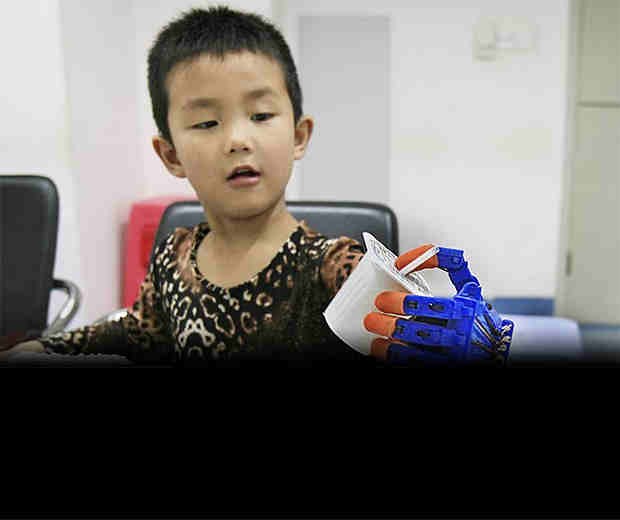A spinal surgery operation performed on a man suffering from a spinal deformity has been declared successful by doctors from Hunan Province in South China, the Xinhua News Agency reported.
Professor Zhan Ruisen of the Third Xiangya Hospital of Central South University, who led the successful surgery, said a 3D-printed device was used to help doctors determine the angle and depth of the incisions as well as ensure the accuracy of the operation.
According to the report, the patient, who has a severe humpback, had long been suffering from spinal arthritis. Due to the deformity, the man's height shrunk from 1.7 meters to 1.3 meters, which required doctors to cut parts of his spine to restore his upright posture.
Zhan said that the surgery has to be highly precise because of the dense distribution of nerves on the spine, in which any mistake in the operation could result in paralysis of the patient.
The report said that the position and depth of incision were marked on a 3D-printed nylon part as an accurate model of the patient's spine. The part was fastened to the spine, which made the surgery easier for the doctors and reduced the operation time by half to five hours.
The patient, who has been transferred to a general ward, is expected to be able to walk after a week, the report said.
The news of the successful spine surgery came after Chinese doctors in Jilin Province had performed a successful heart surgery on a nine-month-old baby suffering from severe congenital heart defect (CHD) using a 3D-printed heart model.
The Xinhua News Agency reported that the first open heart surgery operation using 3D technology was conducted on March 11, 2016.
The report said that the baby was experiencing shortness of breath after birth and was diagnosed with CHD.
"The defect was very rare and complicated," Zhang Xueqin, the baby's surgeon and director of the pediatric cardiac surgery center at the People's Hospital of Jilin, was quoted as saying.
The doctor said that the baby suffered from total pulmonary venous anomalous drainage, in which all four of his pulmonary veins were malpositioned. The baby also had an atrial septal defect, which cause blood to flow between the upper chambers of the heart.
Using a full-sized replica of the boy's heart produced by 3D printing, Zhang and his team were able to plan the operation.
"With the model, we were able to know precisely where and how we should cut, and how big the incision should be," Zhang said. "And with such a thorough plan, we spent only half the time we had expected to complete the surgery."



























